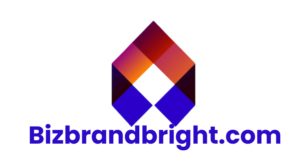Health insurance advertising is a vital tool in the healthcare industry, essential for educating the public and driving consumer engagement with various insurance plans. As healthcare becomes more complex and insurance options diversify, advertising strategies must adapt to address new challenges and leverage innovative solutions. This article explores the evolving landscape of health insurance advertising, highlighting the current challenges and innovative techniques shaping the industry.
Key Challenges in Health Insurance Advertising
- Complexity of Products: Health insurance products are notoriously complex, with intricate details about coverage, costs, and exclusions. Communicating this complexity effectively in advertisements can be challenging. Advertisers must strike a balance between providing comprehensive information and keeping messages clear and concise. Simplifying terminology and using visual aids can help demystify insurance options for potential customers.
- Navigating Regulatory Requirements: Health insurance advertising is heavily regulated to protect consumers from misleading information. Advertisers must adhere to strict guidelines that dictate how insurance plans and benefits can be presented. These regulations can vary by region, making compliance a challenging task. Advertisers need to stay updated with regulatory changes and ensure their messaging aligns with legal standards to avoid penalties and maintain consumer trust.
- Overcoming Consumer Skepticism: Many consumers approach health insurance advertising with skepticism due to past experiences with deceptive practices or confusing information. Building trust is crucial for overcoming this skepticism. Advertisers can address this challenge by focusing on transparency, providing clear explanations of coverage details, and featuring authentic testimonials from real customers.
- Differentiating in a Crowded Market: The health insurance market is highly competitive, with numerous providers offering similar products. Standing out in this crowded field requires innovative and distinctive advertising strategies. Advertisers must find unique angles and highlight what sets their insurance plans apart to capture the attention of potential customers.
Innovative Techniques in Health Insurance Advertising
- Personalized Advertising: Personalization is becoming increasingly important in health insurance advertising. By utilizing data analytics and consumer insights, insurers can create tailored advertisements that address the specific needs and preferences of different audience segments. Personalized ads can offer customized recommendations, highlight relevant benefits, and improve engagement by resonating more deeply with potential customers.
- Digital and Social Media Campaigns: The rise of digital and social media platforms has transformed health insurance advertising. Companies are leveraging these platforms to reach a broader audience and engage with consumers through targeted ads, sponsored content, and interactive posts. Social media allows insurers to engage directly with users, answer questions, and provide real-time updates about insurance plans and benefits.
- Educational Content and Resources: Providing educational content is a key strategy in health insurance advertising. Creating informative resources such as blog posts, videos, and infographics helps demystify insurance concepts and empowers consumers to make informed decisions. Educational campaigns can address common questions, explain policy features, and offer tips for selecting the right coverage.
- Interactive Tools and Calculators: Interactive tools such as cost calculators, coverage finders, and policy comparison charts are increasingly used in health insurance advertising. These tools allow potential customers to interact with the content, assess their needs, and receive personalized recommendations. Interactive elements enhance user experience and provide valuable insights, making it easier for consumers to understand their options.
- Influencer Partnerships: Collaborating with influencers is a growing trend in health insurance advertising. Influencers who specialize in health, wellness, or personal finance can help promote insurance products by sharing their experiences and endorsing specific plans. Their credibility and reach can enhance the effectiveness of advertising campaigns and attract a wider audience.
- Omnichannel Marketing: Omnichannel marketing ensures that health insurance advertisements reach potential customers across multiple touchpoints. By integrating various channels, such as television, radio, online platforms, and direct mail, insurers can create a cohesive and comprehensive advertising strategy. An omnichannel approach helps reinforce messages and increases the likelihood of reaching consumers through their preferred channels.
- Innovative Storytelling: Storytelling is a powerful technique for capturing consumer interest and conveying the value of health insurance. Advertisers can use storytelling to highlight real-life scenarios where insurance coverage made a significant difference. These narratives can create emotional connections, illustrate the importance of having insurance, and inspire action.
Measuring Success and Impact
To evaluate the effectiveness of health insurance advertising, insurers should track several key metrics:
- Return on Investment (ROI): Assessing the ROI of advertising campaigns helps determine their financial impact and effectiveness in driving enrollments.
- Engagement Rates: Measuring engagement rates, such as click-through rates and interaction with interactive tools, provides insight into how well the ads resonate with the audience.
- Customer Acquisition Cost: Analyzing the cost of acquiring new customers through advertising helps evaluate the efficiency of different marketing strategies.
- Customer Feedback: Gathering feedback from customers about their experiences with the advertisement can offer valuable insights for improving future campaigns.
In summary, health insurance advertising faces challenges such as the complexity of products, regulatory constraints, and consumer skepticism. However, by adopting innovative techniques like personalized advertising, digital campaigns, educational content, and interactive tools, insurers can create effective and impactful advertising strategies. These innovations not only help differentiate products in a competitive market but also enhance consumer understanding and engagement with health insurance options.





